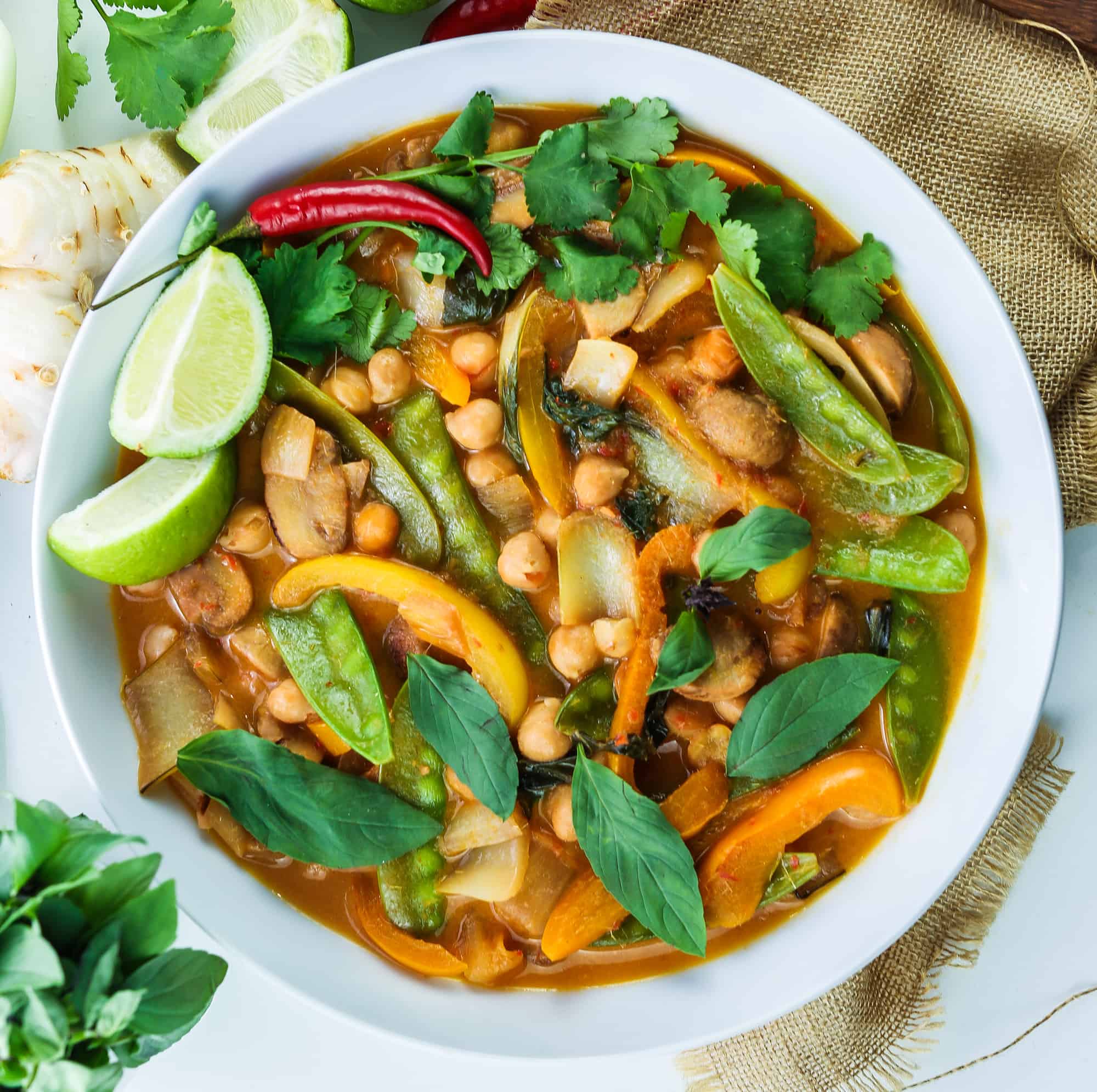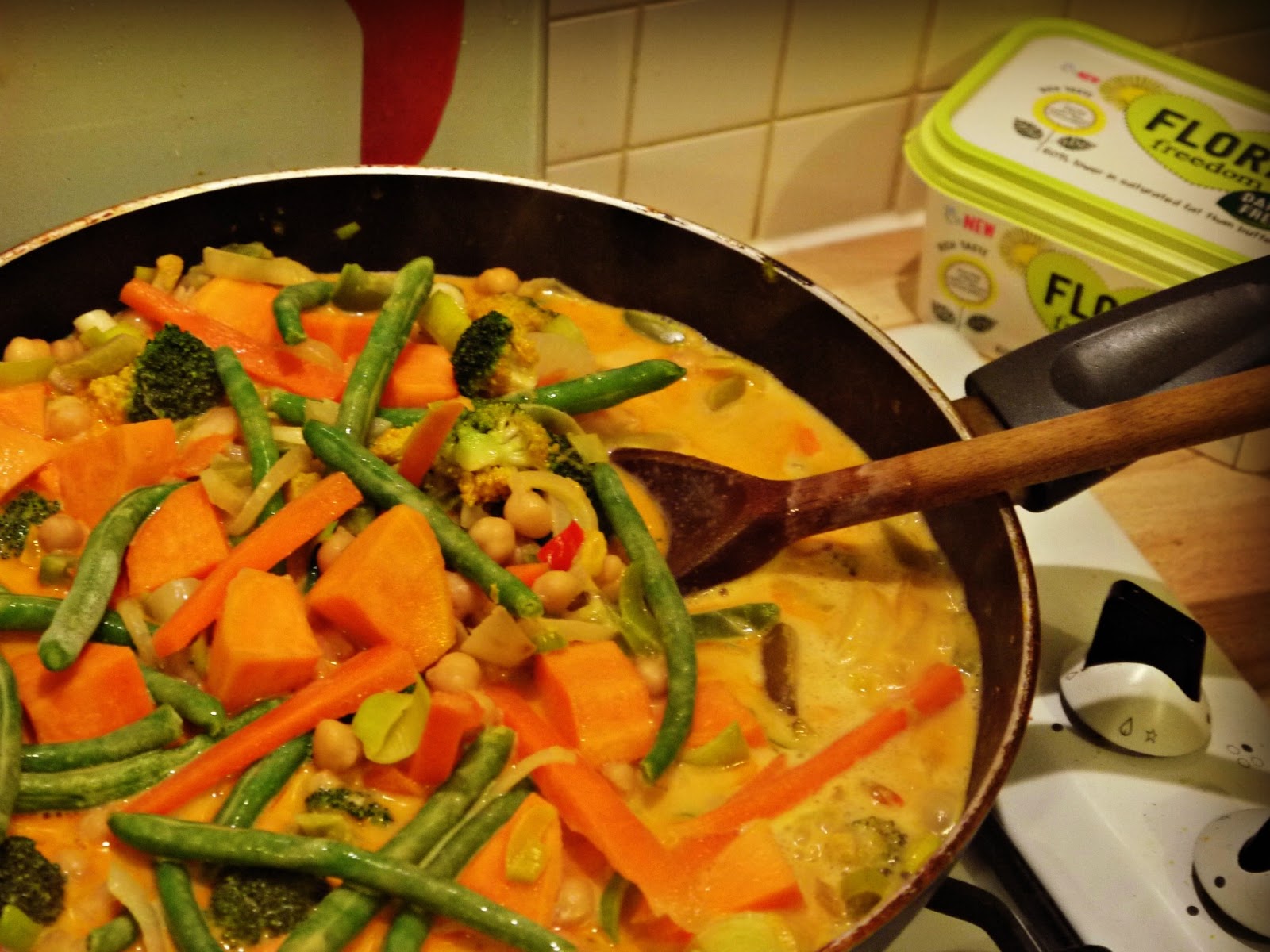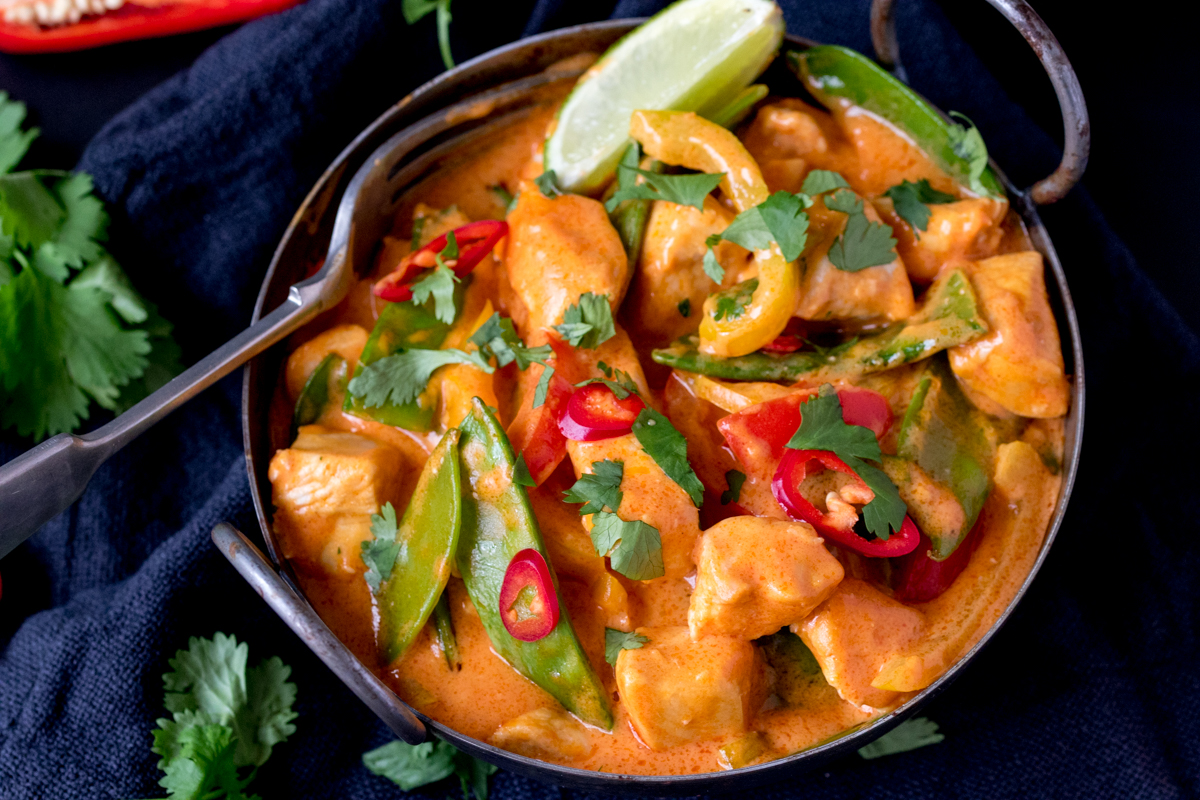Introduction to Vegan Red Thai Curry

Red Thai curry, a vibrant and aromatic dish, holds a significant place in Thai cuisine. Its origins are deeply rooted in the country’s rich culinary history, evolving over centuries from simpler curries to the complex and flavorful dish we know today. While the exact timeline is debated, the use of red chilies, a key ingredient, became widespread in Thailand centuries ago, influencing the development of various curry pastes. The specific blend of ingredients within the paste varies regionally, contributing to the diverse range of red curry flavors found across Thailand.
The primary difference between traditional and vegan red Thai curry lies in the omission of fish sauce and other animal-derived ingredients in the vegan version. Traditional red Thai curry often incorporates fish sauce (nam pla) for umami and shrimp paste (kapi) for depth of flavor. Coconut milk remains a staple in both versions, providing its characteristic creamy texture and richness. Vegan red Thai curry substitutes these ingredients with plant-based alternatives, such as soy sauce, mushroom stock, or nutritional yeast, to achieve a similar depth of flavor without compromising the authenticity or taste.
Health Benefits of Vegan Red Thai Curry
Vegan red Thai curry offers several health benefits. The abundance of vegetables provides essential vitamins, minerals, and fiber. Coconut milk, while high in fat, contains medium-chain triglycerides (MCTs), which are metabolized differently than other fats and can provide a quick source of energy. Furthermore, the use of plant-based protein sources, such as tofu or tempeh, can contribute to a balanced and nutritious meal. The vibrant spices in the curry, including ginger, lemongrass, and galangal, are known for their anti-inflammatory and antioxidant properties. For example, curcumin, found in turmeric (a common ingredient in red curry paste), has been studied for its potential anti-inflammatory effects. It’s important to note that while these are potential benefits, the overall health impact depends on the specific ingredients and the overall diet. A balanced approach is always recommended.
Essential Ingredients

Creating a delicious vegan red Thai curry hinges on selecting the right ingredients. The vibrant color, fragrant aroma, and complex flavors all stem from a careful balance of sweet, sour, salty, spicy, and umami notes. Each ingredient plays a crucial role in achieving that authentic Thai curry experience. Let’s delve into the specifics.
| Ingredient | Quantity (adjust to your needs) | Vegan Substitute (if applicable) | Notes |
|---|---|---|---|
| Red Curry Paste | 2-4 tablespoons | N/A | The foundation of the flavor. Look for a paste that’s vibrant red and fragrant, indicating a good balance of chilies, lemongrass, galangal, and other spices. The amount depends on your spice preference. |
| Coconut Milk | 1 (13.5 oz) can, full-fat | N/A | Provides the creamy texture and richness of the curry. Full-fat coconut milk is recommended for the best results; light coconut milk will yield a thinner curry. |
| Vegetable Broth | 1 cup | Water | Adds liquid to the curry and helps to balance the flavors. Vegetable broth enhances the depth of flavor, but water works in a pinch. |
| Soy Sauce or Tamari | 2 tablespoons | Coconut aminos | Provides saltiness and umami. Tamari is a gluten-free alternative to soy sauce. Coconut aminos offer a slightly sweeter and less salty alternative. |
| Brown Sugar or Maple Syrup | 1 tablespoon | Agave Nectar | Balances the spice and adds a touch of sweetness. Adjust the amount according to your preference and the sweetness of the curry paste. |
| Lime Juice | 2 tablespoons | N/A | Adds brightness and acidity, cutting through the richness of the coconut milk and balancing the other flavors. Freshly squeezed lime juice is best. |
| Vegetables | Assorted, such as bell peppers, bamboo shoots, eggplant, zucchini, carrots, green beans | N/A | Choose your favorite vegetables; the possibilities are endless! Consider the cooking times of different vegetables to ensure they are cooked through but still retain some texture. |
| Tofu or Tempeh (optional) | 1 block, cubed | N/A | Adds protein and a hearty texture. Firm or extra-firm tofu works best. Tempeh provides a more earthy and slightly chewier texture. |
| Fresh Basil | 1/4 cup, chopped | N/A | Garnishes the curry and adds a fresh, herbaceous note. Other herbs like cilantro or mint can also be used. |
Vegetable Selection and Preparation
The choice of vegetables significantly impacts the final flavor profile and texture of the red Thai curry. Firm vegetables like bell peppers and carrots hold their shape well during cooking, contributing a satisfying crunch. Softer vegetables such as eggplant and zucchini become tender and absorb the flavorful curry sauce. Proper preparation, such as chopping vegetables into consistent sizes, ensures even cooking. Pre-cooking sturdier vegetables like carrots or broccoli before adding them to the curry can prevent them from becoming too hard while ensuring the softer vegetables don’t overcook.
Preparing the Curry Paste: Red Thai Curry Vegan Recipe
Making your own red Thai curry paste is a rewarding experience! It allows for complete control over the spice level and the quality of ingredients, resulting in a far superior flavor compared to store-bought options. The process might seem daunting at first, but with a little patience and the right tools, you’ll be creating vibrant, aromatic pastes in no time. The key is to balance the flavors and textures of the ingredients, creating a harmonious blend of sweet, sour, salty, spicy, and bitter.
The foundation of any good red Thai curry paste lies in the careful preparation and combination of its components. This involves roasting some ingredients to enhance their depth of flavor, and then meticulously grinding everything together until a smooth paste is achieved. A mortar and pestle is traditionally used for this, but a food processor can also work well. Remember to work in batches to avoid overloading your processor.
Mild Red Thai Curry Paste Recipe
This recipe provides a gentle introduction to the flavors of red Thai curry, perfect for those who prefer a less intense spice level. The sweetness of the lemongrass and galangal balances the subtle heat from the chilies.
Ingredients:
- 2 red bell peppers, roughly chopped
- 2-3 red chilies, deseeded and roughly chopped (adjust to your preference)
- 4 cloves garlic, roughly chopped
- 1 inch piece of galangal, roughly chopped
- 2 stalks lemongrass, white part only, roughly chopped
- 1 teaspoon ground cumin
- 1 teaspoon ground coriander
- 1/2 teaspoon shrimp paste (optional, can be omitted for vegan)
- 1/4 teaspoon salt
- 2 tablespoons vegetable oil
Instructions: Lightly roast the peppers and chilies in a pan until slightly charred. Combine all ingredients in a food processor and blend until a smooth paste forms.
Medium Red Thai Curry Paste Recipe
This recipe offers a more pronounced spice level, showcasing the vibrant heat of the chilies while maintaining a balance of flavors. The addition of kaffir lime leaves contributes a unique citrusy aroma.
Ingredients:
- 1 red bell pepper, roughly chopped
- 5-7 red chilies, deseeded and roughly chopped
- 4 cloves garlic, roughly chopped
- 1 inch piece of galangal, roughly chopped
- 2 stalks lemongrass, white part only, roughly chopped
- 1 teaspoon ground cumin
- 1 teaspoon ground coriander
- 1/2 teaspoon shrimp paste (optional, can be omitted for vegan)
- 1/4 teaspoon salt
- 2 tablespoons vegetable oil
- 3-4 kaffir lime leaves
Instructions: Lightly roast the peppers and chilies. Combine all ingredients in a food processor and blend until smooth.
Spicy Red Thai Curry Paste Recipe, Red thai curry vegan recipe
For those who enjoy a fiery kick, this recipe delivers a powerful punch of heat. The increased amount of chilies and the addition of black pepper create a complex, intense flavor profile.
Ingredients:
- 1/2 red bell pepper, roughly chopped
- 10-12 red chilies, deseeded and roughly chopped
- 4 cloves garlic, roughly chopped
- 1 inch piece of galangal, roughly chopped
- 2 stalks lemongrass, white part only, roughly chopped
- 1 teaspoon ground cumin
- 1 teaspoon ground coriander
- 1/4 teaspoon black pepper
- 1/2 teaspoon shrimp paste (optional, can be omitted for vegan)
- 1/4 teaspoon salt
- 2 tablespoons vegetable oil
Instructions: Lightly roast the peppers and chilies. Combine all ingredients in a food processor and blend until smooth.
Comparison of the Three Pastes
The three pastes offer a spectrum of spice levels, from mild to intensely spicy. The mild paste provides a gentle introduction to the core flavors, while the medium paste offers a balanced heat and complexity. The spicy paste delivers a powerful, fiery experience, best suited for those with a high tolerance for heat. The textures of all three pastes should be smooth and homogenous, though the color may vary slightly depending on the amount of red pepper used. The aroma will be rich and fragrant, with noticeable notes of lemongrass, galangal, and chilies. The flavor profiles will differ primarily in their level of spiciness, but also in the relative intensity of other flavor notes.
Cooking the Vegan Red Thai Curry
Now that we’ve prepped our amazing curry paste, it’s time to bring this vibrant dish to life! This recipe uses seasonal autumn vegetables for a hearty and flavorful curry, but feel free to adapt it to whatever vegetables are freshest and most appealing to you. Remember, the beauty of cooking is in the experimentation!
Red thai curry vegan recipe – The key to a successful red Thai curry is gentle simmering to allow the flavors to meld beautifully. We’ll start by building a fragrant base before introducing our vegetables and coconut milk. Don’t be afraid to adjust the amount of chili paste to your preferred spice level; a little goes a long way!
Sautéing Aromatics and Vegetables
We begin by building a flavorful foundation. This step enhances the overall taste of the curry by releasing the aromatic oils and gently cooking the vegetables before adding the coconut milk.
- Heat a tablespoon of coconut oil in a large pot or wok over medium heat. Add one finely chopped shallot and two cloves of minced garlic. Sauté for about 2 minutes, until fragrant and softened. The shallot should become translucent, and the garlic should release its pungent aroma.
- Add 1 cup of chopped butternut squash, ½ cup of sliced shiitake mushrooms, and ½ cup of chopped bell peppers (any color). Stir-fry for 5-7 minutes, until the vegetables are slightly tender-crisp. The vegetables should retain some bite, but not be raw.
- Stir in 2 tablespoons of prepared red Thai curry paste. Cook for another minute, stirring constantly, to allow the paste to bloom and release its flavors. The paste will darken slightly and the aroma will intensify.
Simmering the Curry
This stage is crucial for developing the rich and creamy texture of the curry. The gentle simmer allows the flavors to blend seamlessly, creating a harmonious balance of sweet, savory, and spicy notes.
- Pour in 1 ½ cups of full-fat coconut milk. Stir well to combine all ingredients. The coconut milk will create a creamy base for the curry.
- Bring the mixture to a gentle simmer, then reduce the heat to low. Cover and let it simmer for 15-20 minutes, stirring occasionally. The curry will thicken slightly as it simmers. Taste and adjust seasoning as needed; you might want to add a pinch of salt or brown sugar to balance the flavors.
- Add 1/4 cup of chopped fresh cilantro and 2 tablespoons of lime juice before serving. This adds a fresh, vibrant note to the finished curry. Garnish with extra cilantro and a lime wedge for a visually appealing presentation.
Adjusting Spiciness
The level of spiciness in your red Thai curry is entirely customizable. This allows you to tailor the recipe to your personal preference, ranging from mild to fiery.
Start by adding 1-2 tablespoons of the red curry paste. Taste and add more gradually until you reach your desired level of heat. Remember that the heat will intensify as the curry simmers. For a milder curry, use less paste. For a spicier curry, add more, but do so incrementally to avoid overwhelming the other flavors.
Serving Suggestions and Variations
This vibrant vegan red Thai curry is incredibly versatile, lending itself to a variety of serving styles and ingredient additions. The rich, complex flavors provide a delicious base for experimentation, allowing you to tailor the dish to your preferences and what you have on hand. Below, I’ve Artikeld some creative serving ideas and exciting recipe variations to inspire your culinary adventures.
This section will explore different ways to enjoy your homemade vegan red Thai curry, offering serving suggestions and highlighting three distinct variations that showcase the curry’s adaptability. These variations demonstrate how easily you can customize the recipe to create unique flavor profiles and textures.
Serving Suggestions
Serving this curry is half the fun! Its bold flavors pair beautifully with a range of accompaniments, enhancing the overall dining experience.
- Serve it with fluffy jasmine rice: The fragrant rice perfectly complements the curry’s creamy texture and spicy kick, providing a satisfying base for soaking up all the delicious sauce. The subtle sweetness of the rice balances the heat of the curry beautifully.
- Top with toasted coconut flakes and chopped peanuts: Adding toasted coconut flakes provides a delightful textural contrast and a subtle sweetness that enhances the curry’s richness. Chopped peanuts contribute a nutty crunch and a boost of protein.
- Pair it with fresh herbs and lime wedges: Garnish with fresh cilantro, basil, or mint for a refreshing burst of aroma and flavor. A squeeze of lime juice brightens the curry and adds a touch of acidity that cuts through the richness.
Recipe Variations
The beauty of this recipe lies in its adaptability. By substituting vegetables or adding different protein sources, you can create entirely new flavor profiles without compromising the delicious core of the red Thai curry.
- Vegetable Medley Variation: Instead of just using bell peppers and bamboo shoots, incorporate a medley of vegetables like broccoli florets, sliced carrots, and baby corn. The added sweetness of the carrots and the slight bitterness of the broccoli create a more complex flavor profile, while the baby corn adds a delightful crunch. This variation adds a wider range of nutrients and textures.
- Tofu Variation: Add cubed firm or extra-firm tofu to the curry during the last 10 minutes of cooking. The tofu will absorb the flavorful curry sauce, becoming tender and subtly spicy. Pressing the tofu beforehand helps remove excess water and ensures a firmer texture in the finished dish. This variation adds a significant source of plant-based protein.
- Tempeh Variation: Crumble tempeh into the curry during the last 10-15 minutes of cooking. The tempeh’s slightly earthy and nutty flavor complements the spices beautifully, creating a hearty and satisfying meal. Marinate the tempeh in a little soy sauce and brown sugar before adding it to the curry for an extra layer of flavor. This variation provides a unique textural contrast and a different protein source.
Visual Representation of the Dish

A perfectly executed vegan red Thai curry is a feast for the eyes, as much as it is for the palate. The vibrant colors, contrasting textures, and thoughtful presentation all contribute to an overall impression of deliciousness and authenticity. The visual appeal should immediately evoke the flavors and aromas of Thailand.
The ideal visual appearance centers around a rich, deep red hue, stemming from the curry paste itself. This vibrant color should be punctuated by the contrasting colors of the ingredients: the bright green of vegetables like bell peppers and broccoli, the creamy white or beige of coconut milk, and the earthy browns of tofu or other protein sources. The texture should be inviting, showcasing a balance of tender vegetables, succulent protein, and a glossy, slightly oily sheen from the coconut milk, suggesting richness and depth of flavor.
Color and Texture in Variations
The visual appeal of each variation depends heavily on the added ingredients. For example, a red Thai curry featuring pineapple will exhibit a brighter, more cheerful palette due to the sunny yellow of the fruit. The addition of peanuts introduces a speckled texture and a warm, beige tone. A version incorporating mushrooms will showcase earthy browns and subtle variations in texture, while a coconut milk-based curry will have a smoother, creamier look. A variation with added vegetables like green beans and bamboo shoots would enhance the visual appeal with a contrasting variety of greens and textures. Adding spinach towards the end adds a darker, deeper green.
Plating and Garnishing Techniques
Plating and garnishing are crucial for elevating the visual appeal of your vegan red Thai curry. A simple yet elegant approach involves serving the curry in a shallow bowl, allowing the vibrant colors and textures to be fully appreciated. A scattering of fresh cilantro leaves adds a pop of bright green and a touch of freshness. A sprinkle of toasted sesame seeds provides textural contrast and a subtle nutty aroma. Lime wedges, placed artfully on the side, offer a vibrant contrast in color and provide a final touch of acidity. For a more sophisticated presentation, you could consider serving the curry in individual ramekins or bowls, each garnished with a small sprig of cilantro and a few kaffir lime leaves. Alternatively, the curry could be served alongside a bed of fragrant jasmine rice, further enhancing the overall visual presentation. The rice provides a neutral background that complements the bold colors of the curry.